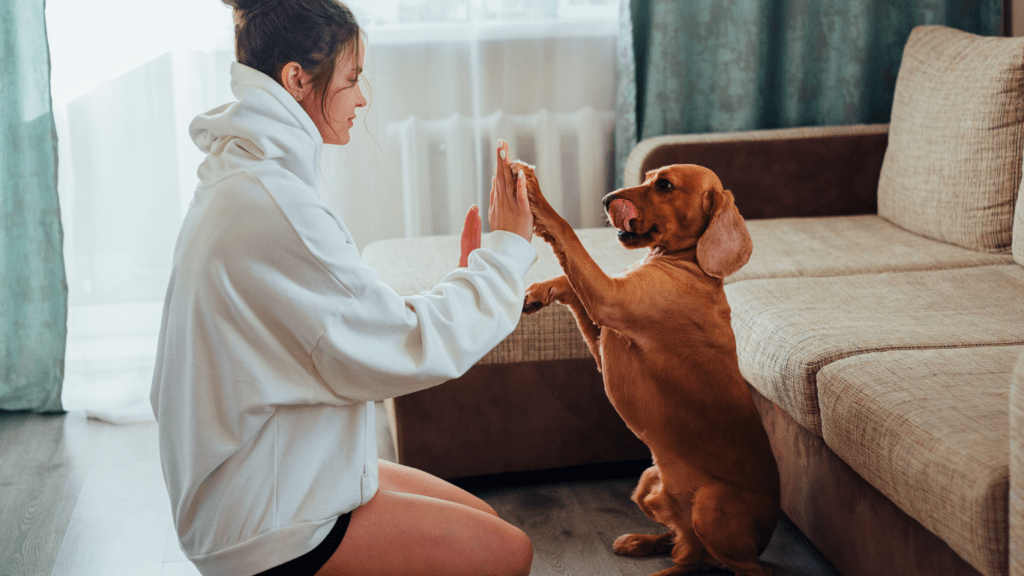Ever wondered why some training techniques work wonders for one pet, but fall flat with another? When it comes to teaching our furry friends new tricks, understanding their unique learning styles is key. In this article, I’ll delve into the fascinating world of pet psychology to help you tailor your training methods for optimal results.
As a pet owner, I’ve experienced firsthand the challenges of decoding my pet’s behavior and preferences. By recognizing that each pet has its own way of processing information and responding to stimuli, we can unlock the door to effective training.
Whether your pet is a quick learner or needs a bit more patience, adapting your approach to suit their individual learning style can make all the difference in achieving training success.
Join me on this insightful journey as we explore how to identify and leverage your pet’s learning style to create a harmonious training environment that strengthens the bond between you and your beloved companion.
Importance of Understanding Your Pet’s Learning Style
Understanding your pet’s learning style is crucial for effective training. Different pets have unique ways of processing information and responding to stimuli. By recognizing and catering to these individual learning styles, I can enhance the training experience and achieve better results with my furry friend.
Adapting training techniques to suit your pet’s learning style not only facilitates faster learning but also strengthens the bond between you and your pet. Just as humans have varied learning preferences, pets also have specific ways in which they understand and retain information.
Recognizing these differences allows me to tailor my training methods accordingly, ensuring that my pet grasps commands more efficiently and responds positively to training sessions.
By observing my pet’s behaviors, reactions, and responses during training, I can identify whether they are visual, auditory, or kinesthetic learners. This insight helps me adjust my training approach to align with my pet’s learning style, making the training process more engaging and productive.
Ultimately, understanding and adapting to my pet’s learning style not only leads to successful training outcomes but also creates a harmonious and fulfilling relationship between us. It’s about respecting their unique way of learning and communicating, thus fostering a deeper connection built on trust and effective communication.
Various Learning Styles in Pets
Understanding the diverse learning styles of pets is crucial for tailoring training techniques effectively. By recognizing and adapting to these individual styles, pet owners can enhance the training process, achieve superior results, and strengthen their bond with their furry companions.
Visual Learners
I’ve found that visual learners in the pet world respond exceptionally well to training techniques that involve demonstrations and visual cues. Using gestures, hand signals, or visual aids during training sessions can significantly help pets who learn best through visual stimulation.
Auditory Learners
For pets that are auditory learners, incorporating sounds, verbal cues, and consistent tones during training can make a world of difference. Speaking commands clearly and consistently, along with using sound cues like clicks or whistles, can effectively capture the attention of auditory learners during training sessions.
Kinesthetic Learners
When it comes to kinesthetic learners, pets thrive on hands-on, interactive training methods. These learners benefit greatly from physical activities, interactive play, and the use of treats or toys as rewards during training. Engaging their senses through touch and movement is key to effectively teaching kinesthetic learners.
Tailoring Training Techniques for Different Learning Styles
Understanding your pet’s learning style is crucial for successful training. Just like humans, pets have individual learning preferences that influence how they best absorb information. Tailoring your training techniques to match your pet’s learning style can lead to more effective and enjoyable training sessions.
- Use Visual Aids:
Incorporate hand signals, demonstrations, and props to effectively train visual learners who respond well to observation. - Demonstrate Tasks:
Show how tasks are performed to help visual learners understand and learn more effectively through observation.
On the other hand, auditory learners thrive on sound cues and consistent verbal commands. These pets respond well to spoken words and tones used during training. Providing clear and consistent verbal cues, using a calm and firm tone, can greatly aid in training auditory learners effectively.
Kinesthetic learners, which are pets that learn best through hands-on experiences and physical activities, require interactive training methods. Engage kinesthetic learners with activities that involve movement, touch, and rewards for completing tasks. Incorporating physical exercises and interactive play during training can be highly beneficial for these pets.
By identifying and adapting to your pet’s specific learning style, you can customize your training methods to suit their preferences, making the training process more efficient and enjoyable for both you and your furry friend. This personalized approach fosters a stronger bond, promotes effective communication, and leads to successful outcomes in training.
Applying Training Techniques to Enhance Learning
In tailoring training techniques to enhance learning for pets, I adapt methods based on their unique learning styles. Dogs, as visual learners, respond well to demonstrations and visual cues. They pick up commands more effectively when shown what to do.
For instance, when teaching a dog to sit, I perform the action myself, demonstrating the desired behavior for them to mimic.
Cats, on the other hand, are often auditory learners, benefiting from sound cues and consistent verbal commands. When training a cat to come when called, I use a specific sound or phrase consistently to associate it with the desired behavior.
This repetition helps cats understand what is expected of them.
For kinesthetic learners like rabbits, hands-on, interactive training is key. I engage with them physically, using treats and positive reinforcement during training sessions. For instance, when teaching a rabbit to use a litter box, I guide their movements and provide rewards to reinforce the behavior.
By customizing training methods to align with each pet’s learning style, I ensure effective communication and successful outcomes.
This tailored approach not only accelerates the training process but also strengthens the bond between me and my pets, fostering a deeper understanding and connection through personalized training techniques.


 Rudylier Alejandrosh, the visionary founder of Animal Potty Care, created the platform out of a deep passion for improving pet care solutions and enhancing the relationship between pets and their owners. With years of experience as a dedicated pet enthusiast, Rudylier recognized the challenges pet owners face in managing their pets' behavior, especially in areas like potty training and travel care. His commitment to making pet ownership easier and more enjoyable is reflected in the resources and guidance provided on the platform, which empowers pet owners with practical tips, innovative solutions, and a better understanding of their pets' needs.
Rudylier Alejandrosh, the visionary founder of Animal Potty Care, created the platform out of a deep passion for improving pet care solutions and enhancing the relationship between pets and their owners. With years of experience as a dedicated pet enthusiast, Rudylier recognized the challenges pet owners face in managing their pets' behavior, especially in areas like potty training and travel care. His commitment to making pet ownership easier and more enjoyable is reflected in the resources and guidance provided on the platform, which empowers pet owners with practical tips, innovative solutions, and a better understanding of their pets' needs.